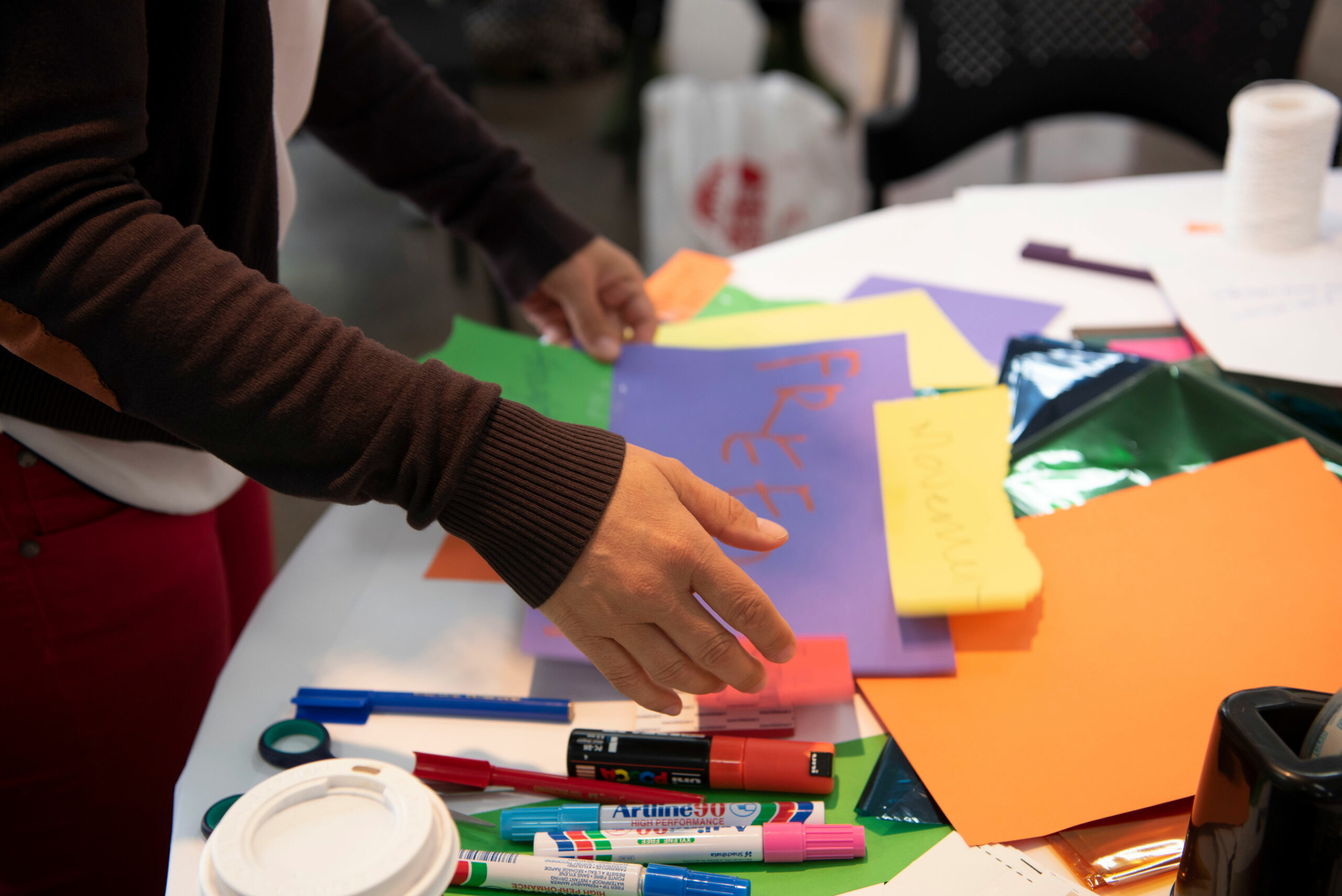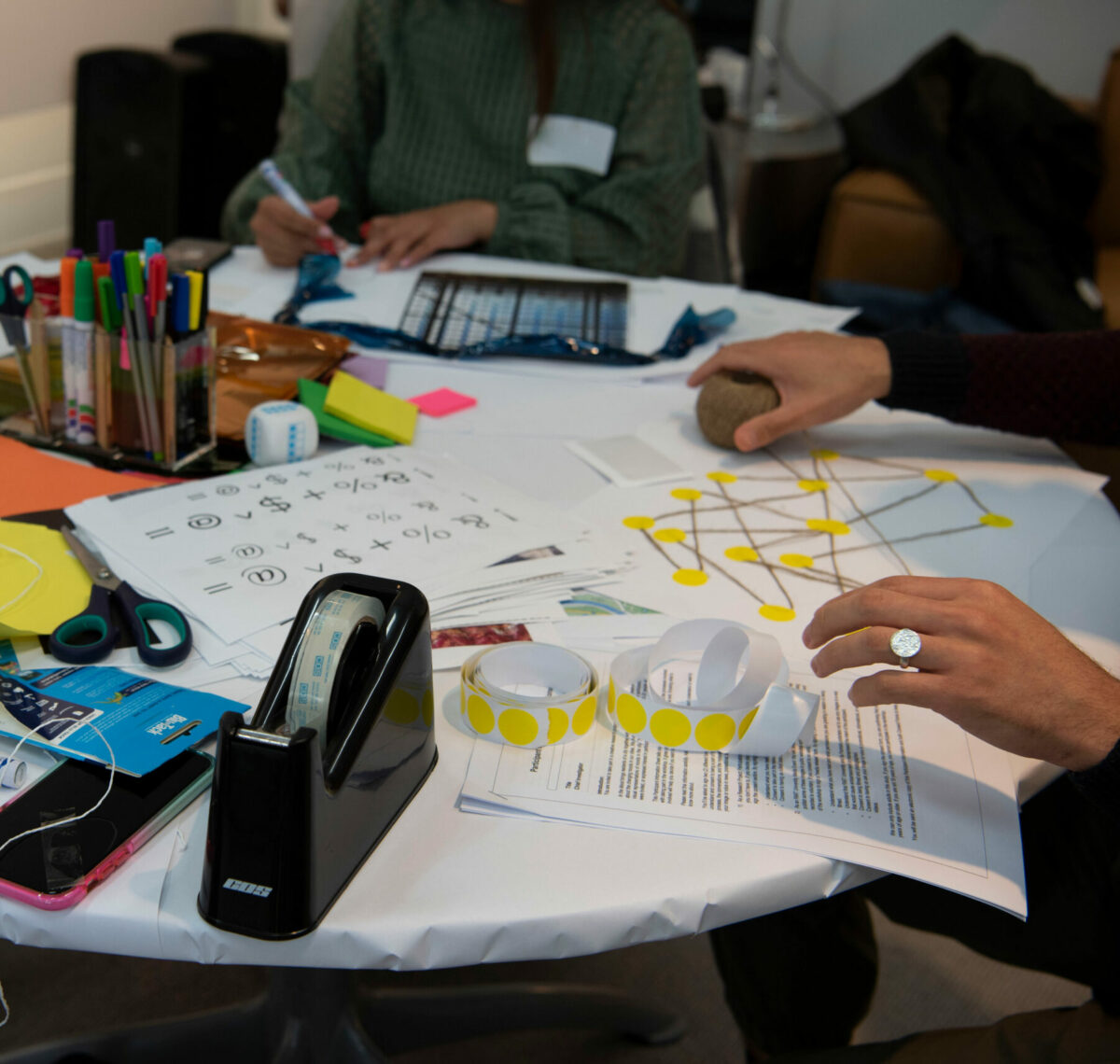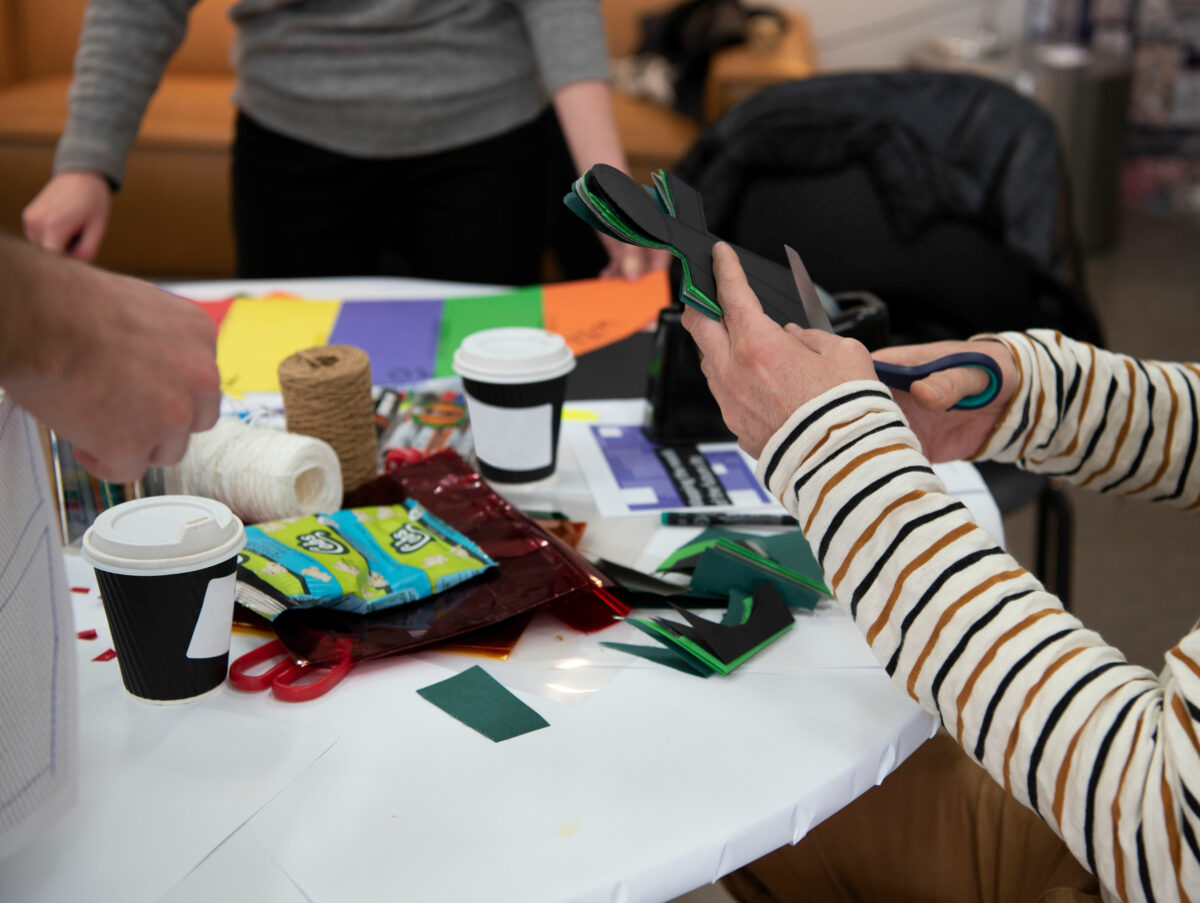Mapping Moods for Future Cities – Melbourne
Have you ever considered what a future “resilient” city would look like?
If we consider moodboarding as a speculative method to inform city planning and policy, How can it help us activate the sensations and impressions of resilience in future cities?

Moodboarding at the Melbourne Workshop 2022. Image: RMIT PlaceLab.
Facilitated by Professor Larissa Hjorth and Professor Annette Markham, this two-hour workshop, invited participants to discuss and participate in playful experiments to generate collaborative maps of the future city of Melbourne, creating layers of resilience to current dystopian and utopian simplifications of our futures. What mood do we want in our future places? What should the future city feel like, if we want to call it “resilient”? And what role can different people play in placemaking?
Workshop Breakdown
- Larrisa and Annette introduced the idea and premises of maps and their connection to moods.
- What did it feel like getting here today? Working individually, participants used visual and textural materials in the space to visualise their mood map of the city, based on their own experiences and feelings.
- What is the mood of the resilient city? Groups were then formed to generate a visual and sensory map of the future city, focusing on mood, and then built additional transparent layers of “resilience” to add to their group map.
- What might you say to the future city? The workshop finished by discussing the challenges of the exercises, as well as the value of these “maps” for community building, citizens “resetting” their own cities, and planners using these as tools for facilitating more resilient city futures.
The ‘Mapping Moods for Future Cities – Melbourne’ Workshop was presented by RMIT PlaceLab, supported by RMIT’s Digital Ethnography Research Centre and aligned with The Big Anxiety Festival 2022 presented by RMIT University.


